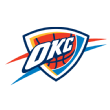The 2025 NBA conference finals have tipped off, with four teams fighting for a spot in the Finals.
The No. 1 seed Oklahoma City Thunder, after a tough seven-game series against the Denver Nuggets, kicked off the Western Conference finals Tuesday night. They defeated Anthony Edwards and the visiting No. 6 seed Minnesota Timberwolves in Game 1 behind Shai Gilgeous-Alexander's 31 points and then took a 2-0 lead in the series in Game 2 on Thursday night. The Thunder will now travel to Target Center for Games 3 and 4, as the Timberwolves will look to bounce back at home.
In the East, the No. 4 seed Indiana Pacers completed an improbable comeback against the No. 3 seed New York Knicks on Wednesday at Madison Square Garden after Tyrese Haliburton made a tying field goal at the buzzer of the fourth quarter to force OT. The Knicks and Pacers will look to make their first Finals appearance since 1999 and 2000, respectively.
As these elite teams face off, our NBA insiders break down their biggest takeaways from every matchup and what to watch for in both conference showdowns.
Jump to a series:
Pacers-Knicks | Timberwolves-Thunder
More coverage:
Schedules and results | Offseason guides

Western Conference


(1) Oklahoma City Thunder lead (6) Minnesota Timberwolves 2-0
Game 2: Thunder 118, Timberwolves 103
Biggest takeaways for the Thunder: Once again, Oklahoma City overwhelmed Minnesota in the third quarter. In this instance, the Thunder outscored the Timberwolves 35-21, a 14-point margin identical to that of Game 1's third quarter. Those dozen minutes on Thursday encapsulated why Oklahoma City has been so dominant all season. Shai Gilgeous-Alexander was in complete control on the offensive end, scoring 11 of his 38 points and making two of his eight assists. The Thunder's defense swarmed and smothered, holding the Timberwolves to 6-of-20 shooting and forcing five turnovers that Oklahoma City converted into 12 points. And the Thunder's deep bench made its presence felt with Cason Wallace and Alex Caruso cranking the defensive chaos up a couple of notches. -- Tim MacMahon
Biggest takeaways for the Timberwolves: Anthony Edwards vowed to shoot more after putting up only 13 attempts in the Wolves' blowout loss in Game 1 and did so in the Wolves' Game 2 loss on Thursday. His 18 attempts in the first half were his most in any half of a playoff game in his career, and he finished with 32 points on 12-for-26 shooting. But it didn't matter. Too many of the same issues that plagued Minnesota in the series opener popped up again in Game 2: turnovers (14, resulting in 22 points for the Thunder), missed 3s (11-for-39 overall, with Edwards going 1-for-9) and letting go of the rope in the third quarter (OKC used a 14-2 run in Game 2, mirroring the 17-2 death knell the Thunder sprang on the Wolves in Game 1). And an unexpected challenge also presented itself for the Wolves: Julius Randle struggled through his first bad game of the postseason. Randle, limited to six points on 2-for-11 shooting and four turnovers, was benched in the fourth as Minnesota coach Chris Finch went with Naz Reid (10 points, eight rebounds, 0-for-5 from 3) instead. Give the Wolves some credit for cutting the deficit to 10 in the final minutes after the Thunder's lead had swelled to 24, but it never felt as though like Oklahoma City was in jeopardy of losing. The only solace Minnesota can take into Game 3 is that there is no mystery why it is trailing 2-0. What needs to be addressed as the conference finals shift to Target Center is abundantly apparent. -- Dave McMenamin
Game 3: Thunder at Timberwolves (Saturday, 8:30 p.m. ET, ABC)
What to watch: For all the in-game comebacks we've seen in this year's playoffs, we've yet to see anyone complete a notable comeback in a series. No team has yet rallied from a 2-0 deficit. Minnesota was actually on the wrong end of the last one of those, having taken a 2-0 lead on the road against the Denver Nuggets in last year's conference semifinals. (The Indiana Pacers also came back from down 2-0 to the New York Knicks in the same round.)
Heading into a must-win Game 3, I wonder if we'll see Chris Finch go to Naz Reid earlier. Reid played the entire fourth quarter as the Timberwolves made a late push with a small lineup on the court featuring neither Randle nor Rudy Gobert in order to have enough quickness to send doubles at Gilgeous-Alexander and rotate behind them.
A force in the paint in both of Minnesota's closeout wins during the first two rounds, Gobert hasn't yet been able to make an impact on offense against Oklahoma City's defense. He has combined for seven points on 3-of-8 shooting. Reid's floor spacing and ability to create his shot puts more pressure on the Thunder.
At the same time, the Timberwolves sacrifice paint defense with Reid at center. As it was, Oklahoma City shot a sizzling 63% inside the arc in Game 2. Per ESPN Research, that accuracy was unchanged with Gobert on or off the court.
One thing we likely won't see much of in Game 3: Minnesota's zone defense. After playing just a handful of zone possessions in Game 1, the Timberwolves went to it more regularly Thursday, particularly in the third quarter. After struggling to score against Denver's zone, the Thunder torched Minnesota's version to the tune of 35 points on 14-of-26 shooting, according to ESPN Research. -- Kevin Pelton

Eastern Conference


(4) Indiana Pacers lead (3) New York Knicks 1-0
Game 1: Pacers 138, Knicks 135 (OT)
In the aftermath of the latest wild Indiana Pacers comeback of these NBA playoffs, Tyrese Haliburton, who is quickly placing himself in the pantheon of New York City villains, glanced at a few assembled reporters and team personnel in the locker room and smiled.
"It's gotta be the shoes," he said.
Haliburton, a student of NBA and Knicks-Pacers history, knew exactly what he was doing. In another era of NBA basketball, Michael Jordan -- before he became a New York supervillain -- did a Jordan shoe campaign with Knicks superfan Spike Lee built around that line.
And on a night where so many former legends from this rivalry's past -- from Reggie Miller to Larry Johnson to Patrick Ewing to Lee himself -- were inside Madison Square Garden, Haliburton and the Pacers authored yet another remarkable escape from defeat with a performance that won't be forgotten anytime soon.
Over the past 27 NBA playoffs, teams had a 0-1,414 record when trailing by at least nine points in the final minute of the fourth quarter or overtime, according to the Elias Sports Bureau.
Now, make that 1-1,414, after Wednesday night's suddenly thrilling Game 1 of the Eastern Conference finals between the Pacers and Knicks.
"We just continue to do it time and time again," Pacers forward Aaron Nesmith, the catalyst of this comeback, said afterward.
To say that the sellout crowd inside Madison Square Garden was stunned by the Pacers erasing a 17-point fourth-quarter deficit to escape with a 138-135 overtime victory is an understatement. But for anyone watching this NBA postseason, it's not entirely surprising that Indiana pulled off this unbelievable accomplishment.
As Nesmith said, the Pacers have made a habit of it.
"This is very difficult to do," Pacers coach Rick Carlisle said, "but it's a 48-minute game."
No team has embodied that mantra more than Indiana in these playoffs. There was the comeback from down seven with 34.5 seconds to go to beat the Milwaukee Bucks in the first round. There was another from down seven in the final 50 seconds in the conference semifinals against the Cleveland Cavaliers. But this finish, with the Knicks fan base fresh off the jubilation of reaching this round for the first time in a quarter century -- and New York seemingly putting the game out of reach through the first 45 minutes -- is Indiana's most impressive yet.
Jalen Brunson got wherever he wanted on the floor. Karl-Anthony Towns was hitting from 3-point range. Mitchell Robinson was unstoppable on the boards.
But the Pacers, as Carlisle said, are constantly putting pressure on their opponents with full-court defense virtually the whole game. They play at a frenetic pace that forces their opponents to speed up with them. And Haliburton credited Indiana's front office for keeping this roster almost completely intact after last year's run, giving the Pacers a rare commodity in today's NBA: continuity.
The end result? A series of comebacks, each one more improbable than the last. And this one included perhaps the most improbable shot of all of them: Haliburton's game-tying jumper to end regulation that hit the back of the rim and went up in the air before dropping through the hoop.
"I felt like it got stuck up there," Haliburton said with another smile.
The Knicks, and their fans, wish it would have. Instead, it dropped through the hoop and helped turn the game into the latest unforgettable playoff moment between these two franchises, who have played the most playoff games (49) of any two teams in the NBA since their first meeting in 1993. And, because of how regularly the Pacers have escaped from these spots the past few weeks, only one thing is certain:
No matter the lead, the Pacers aren't beaten until the clock strikes zero. -- Tim Bontemps
Biggest takeaways for the Pacers:
Never count the Pacers out. Despite trailing by nine points with 58.1 seconds, Indiana stormed back with a furious rally in the fourth quarter to steal Game 1, thanks to another improbable Haliburton shot. The Pacers have now won three games this postseason when down by seven or more points in the final minute. Only one other team in NBA history has pulled off one playoff win in that scenario (the Thunder in 2014). Aaron Nesmith hit six 3-pointers in the fourth quarter, tied for the most in a single playoff quarter in NBA history, and Haliburton nearly knocked down another game winner, with a step-back jumper at the buzzer at the end of regulation, but his foot was on the line and it was ruled a 2-pointer to force overtime. Still, Haliburton became the first player since tracking data began (1998) to record three game-tying or go-ahead field goals in the final five seconds of the fourth quarter or overtime, according to ESPN Research. -- Jamal Collier
Biggest takeaways for the Knicks:
You'll rightfully hear folks make comparisons to Reggie Miller's eight points in nine seconds to help the Pacers knock off New York at the Garden back in 1995's Game 1. Simply put, the Knicks blew a massive opportunity to begin this series -- the type of game you aren't supposed to drop, especially on your home floor.
Yes, big comebacks have been the Pacers' calling card this postseason. (The Knicks' calling card too.) But New York was dominant in the minutes where superstar guard Jalen Brunson wasn't on the floor, and given the Pacers' perceived depth advantage in this matchup, that isn't something we should necessarily expect to happen repeatedly in this series.
The Pacers drew within two, 94-92, with 10 minutes to go in the fourth as Brunson picked up a fifth personal foul, forcing coach Tom Thibodeau to send him to the bench. The Knicks then went on an improbable 14-0 run in the 2½ non-Brunson minutes that followed, putting them up 16 and seemingly putting the contest out of reach.
But between the turnovers and the defensive breakdowns, they didn't effectively close the door. And it could prove costly, just like it did back in 1995, when Miller helped the Pacers steal Game 1 that year. -- Chris Herring
Game 2: Pacers at Knicks (Friday, 8 p.m. ET, TNT)
What to watch:
Do the Pacers have any answer for Brunson? Even in a disastrous defeat, the Knicks should be encouraged by how easily their leading scorer got to his spots in Game 1. It seemed like every guard and wing in Indiana's rotation got some time defending Brunson -- and not one of them could reliably slow the All-NBA guard. Brunson finished with 43 points on 15-for-25 shooting, plus a game-high 14 free throw attempts. It was the eighth 40-point game of his playoff career, setting a new franchise record.
The Pacers' litany of Brunson defenders reads like a deleted scene from "Goldilocks and the Three Bears." Andrew Nembhard wasn't quick enough to stick in front of Brunson. T.J. McConnell wasn't big enough. Ben Sheppard wasn't strong enough. And Nesmith fouled too frequently. However, the Pacers never found their "just right."
Indiana's best defense against Brunson was to get him in foul trouble, forcing him off the court for a large portion of the fourth quarter. But that's not a repeatable formula against a small guard who doesn't foul often; Brunson has now played in 78 games this season and recorded five or six fouls in just six of them (8%). Odds are, he'll be on the court for every important minute for the rest of the series.
Perhaps that won't matter if Nesmith continues his impression of peak Stephen Curry at the end of games. But Brunson's offensive mastery seems a lot more sustainable, as Indiana never found an answer for his drives or pull-up jumpers in Game 1. Unless the Pacers stumble upon a new solution, he might have several more 40-point efforts. -- Zach Kram
